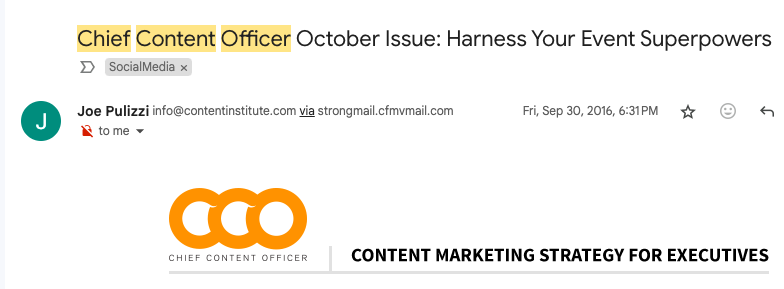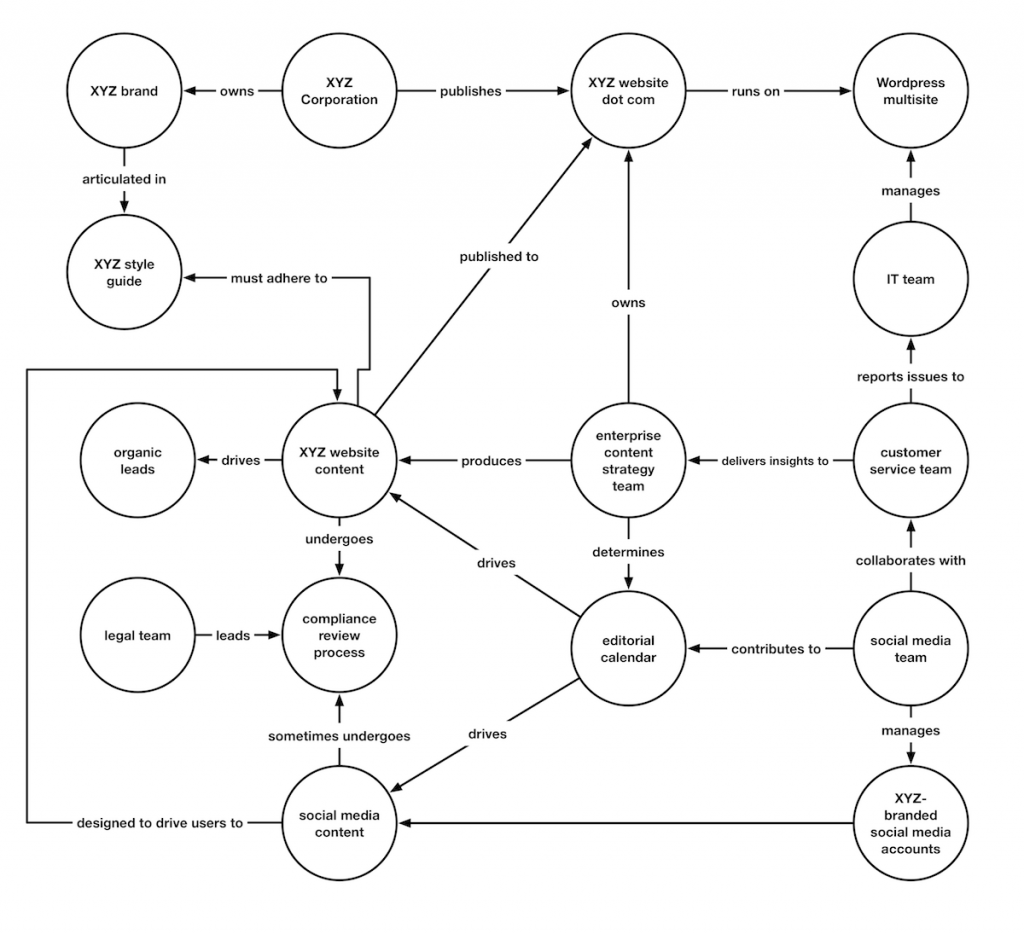I first heard of the term Chief Content Officer in the year 2016, in a CMI email by Joe Pulizzi.

That day, I saw Ann Handley’s profile on their website and saw them as someone who was so ahead in the content game—their thoughts and the content vision. Their message was a reference for me for a while.
Later I saw a few more posts, including the one that Robert Rose wrote in 2022—The New Chief Content Officer: Why the Job Description for the CCO Position Must Change. The role of a Chief Content Officer has been largely confined to addressing the strategic, marketing, and branded content publishing challenges.
In recent years, we have seen a positive convergence of design and content, and product content and interaction design in the product teams, and there is a wider acceptance of the role of content design and product content strategy in the product success and UX goals. However, we still see it as the parallel track, with content leadership reporting to marketing vs reporting to product or even design. We see these stories all the time in conference talks, even in 2024.
This makes me think that we should revisit the role of Chief Content Officer in an organization.
(Note: We saw the rise of Chief Design Officers almost in parallel with the rise in product content, particularly after the growth of design-led and design-centric product teams including Airbnb, Meta (then Facebook), Shopify, Slack, and few others. A Design Council post talks about Chief Design Officers at depth. Peter Merholz talks about Chief Design Officers in the making up of a design executive.)
Content’s sphere of influence
In modern, product-centric organizations, content planning has to be more strategic and holistic to support the organization’s goals at the system level first. Content’s sphere of influence is far beyond product marketing or brand positioning—it plays an equally important and sometimes even more important role in the product itself—for onboarding or customer retention, or in-product user experience goals.
Organizations have their own ways to design teams or squads or functions in product and design. Many of them design it for different flavors or sub-disciplines of content strategy or content design or branding and marketing, including:
- Brand storytelling, marketing, product positioning
- Product content strategy
- Content discovery and vision for the customer success
- Information architecture
- Content design and interactions
- Content technology for product architecture
- Content to support design engineering
- Content operations
- Customer experience, employees experience
- Customer support
- Community, user-generated content, and peripheral content footprints (government, API pipes)
- Voice and tone for the systems and standards
- And sometimes AI content too
We can imagine content’s footprints across different teams, and for different use cases.
Scott Kubie wrote a series of posts on content ecosystem maps via Brain Traffic, a few years ago. When I see the example map in the series, it is clear that the present understanding of a CCO’s role does not address the key content concerns in the organization—in fact it can create content orchestration bottlenecks that the leadership may find too difficult to address.

Content is not a function—it is part of every team, unit, department, or function in any organization. Content workflow is often complicated because different teams have their own understanding of its need, role, goals, and its publishing life cycle. A few industry experts have used visuals and diagrams to show an integrated content life cycle or the content stream, including this by Marie Girard, and this by Rachel McConnell. Acquia published an interesting report on how product content enriches customer experience.
Among all these discussions and reports, if someone says that a Chief Content Officer should be reporting to marketing, it is a step backwards.
Positive signs
Earlier this year, I saw Erica Jorgensen’s interview with Kristina Halvorson where Erica mentioned the need for Chief Content Officers—”I would like to see more content designers, content strategists take on chief content officer roles or UX director roles. I see that as a missed opportunity that a lot of companies aren’t taking advantage of. For whatever reason, I see more product design leaders getting into those roles. And I think that’s a big miss. I think that content people, we see it all. We know it all. We’re so close to the customer and we’re so close to the business.”
I am so happy to see us talking about it now—the real sphere of influence of content and the need of Chief Content Officers. Thank you, Erica.
A Chief Content Officer (CCO) can be a massive strategic advantage for an organization regardless of their scale of operations or of their domain. I remember that the Intelligent Content Conference used to share some really useful success stories of mature content leadership though these were mostly in big corporations. The conference blog run by Marcia Riefer Johnston (see their LinkedIn) had many references that served as a blueprint even for mid-size or smaller organizations.
How a Chief Content Officer helps
A Chief Content Officer has an eye on the holistic content systems and the standards in the organization. A CCO has the vision to build the right paths and the information flow upstream and downstream whether for specific functions (marketing, product, sales, support, continuous discovery, community, government), for context in the customer journey, for customer experience goals, for employee experience, to support design engineering, and for many such internal goals and use cases.
A CCO can make sure that product content strategy supports product marketing for sales enablement. They can establish the content paths to help product marketers work with product managers and design leadership, for their unified vision. A CCO can lead product content strategy making sure that it makes a positive contribution to the product leadership. They can guide or lead internal projects to support different goals such as to set up how structured content supports UI design (Michael Andrews explains it at depth—Bridging the divide between structured content and UI design).
A CCO brings calmness, order, and directions in the discussions where content vision and product vision intersect or lock horns for whatever reasons. I often use this post by Michael Andrews (among their many other posts)—Sincerity in Content Marketing which shows the need of delicate and interesting balance between product content and marketing content.
A Chief Content Officer support content technologists as much as content marketers, researchers, content designers, or copywriters—they are unbiased, focused, and always have one unified goal in their mind.
A CCO can bring a system thinking approach to their content lens to make sure that content aligns and supports the organization for their key concerns at the meta level, as well as at the function level and the execution level. They can ensure that the right content fuel is available at the right time in the content supply chain, for organization wide content operations.
A Chief Content Officer will make sure that fixing content means identifying the gap or the opportunity in the system first.
If we can say that an organization is an intent, the CCO is the best guardian of that intent.
PS: Thank you Noz Urbina for your review and thoughts on my post before I published it.
